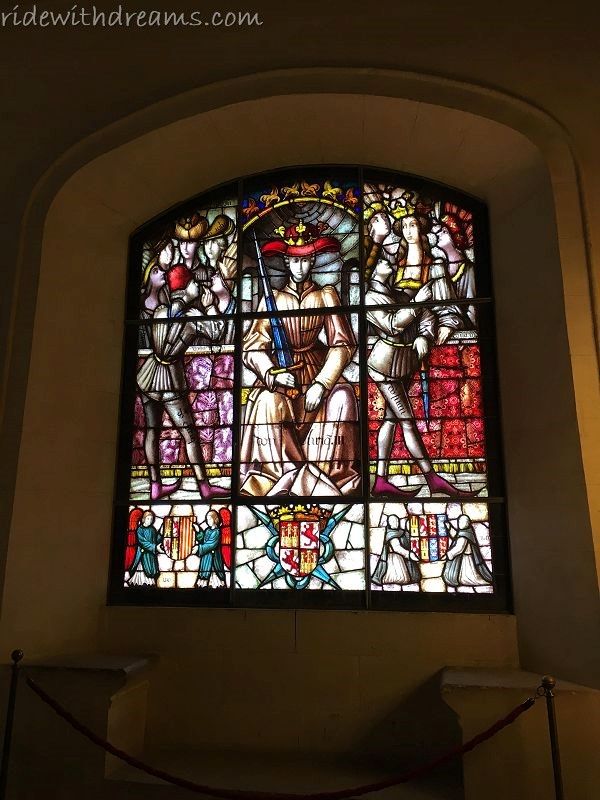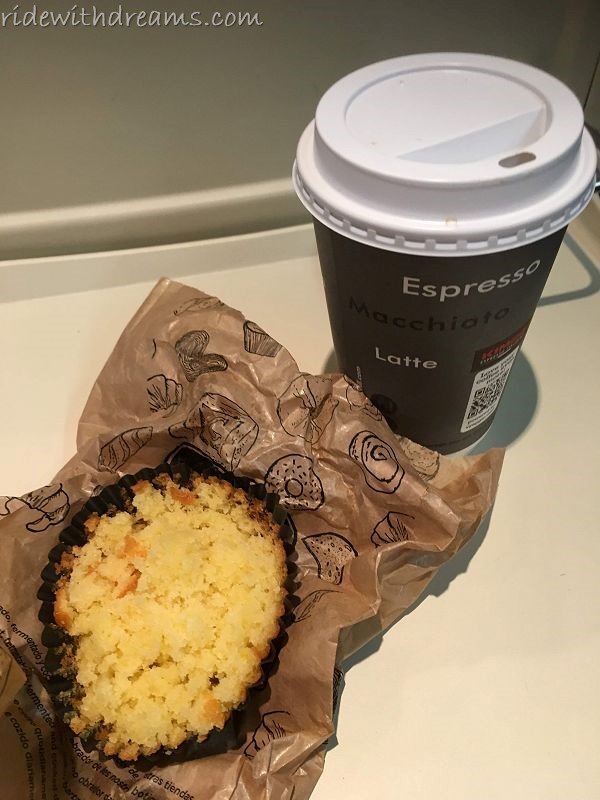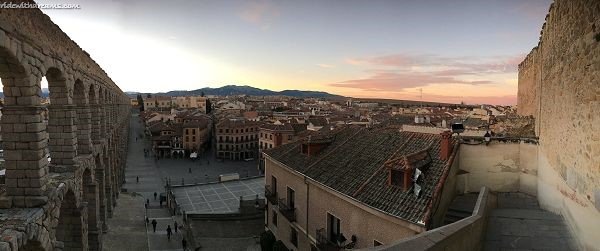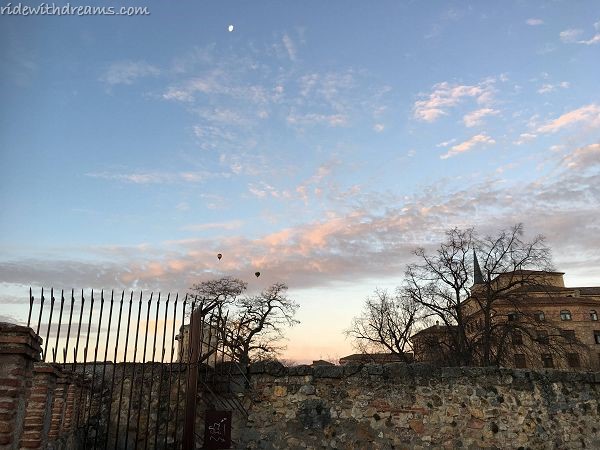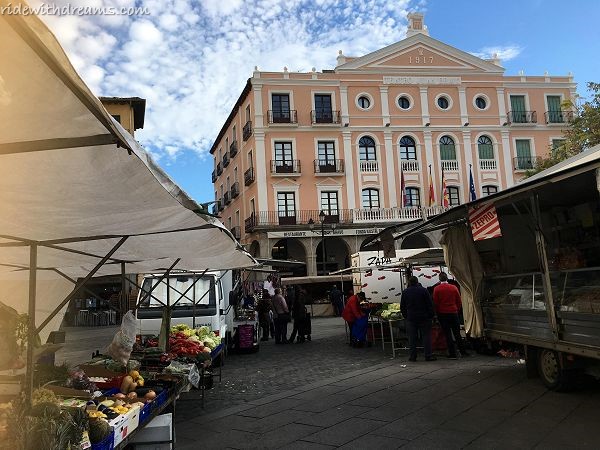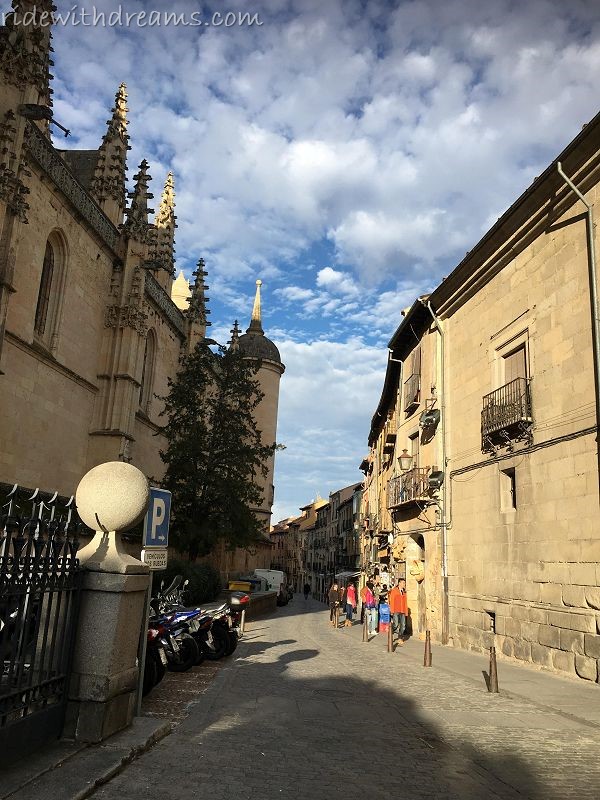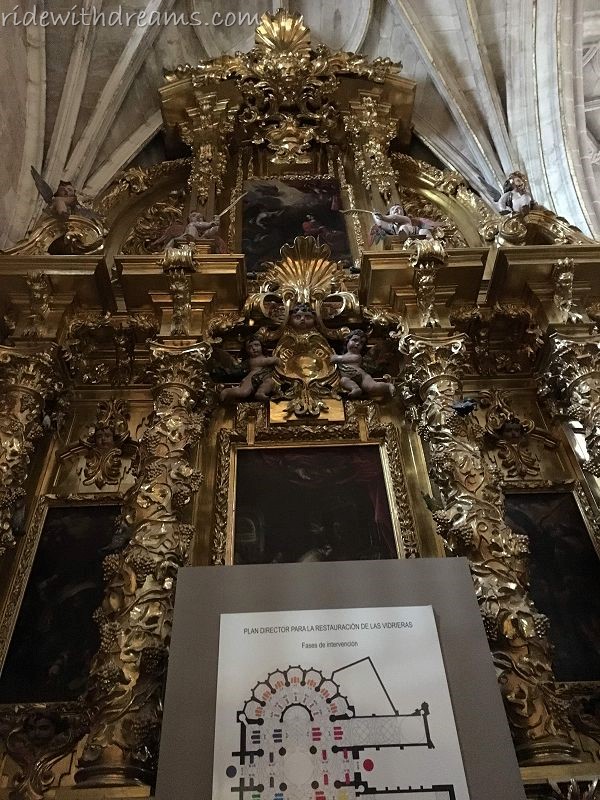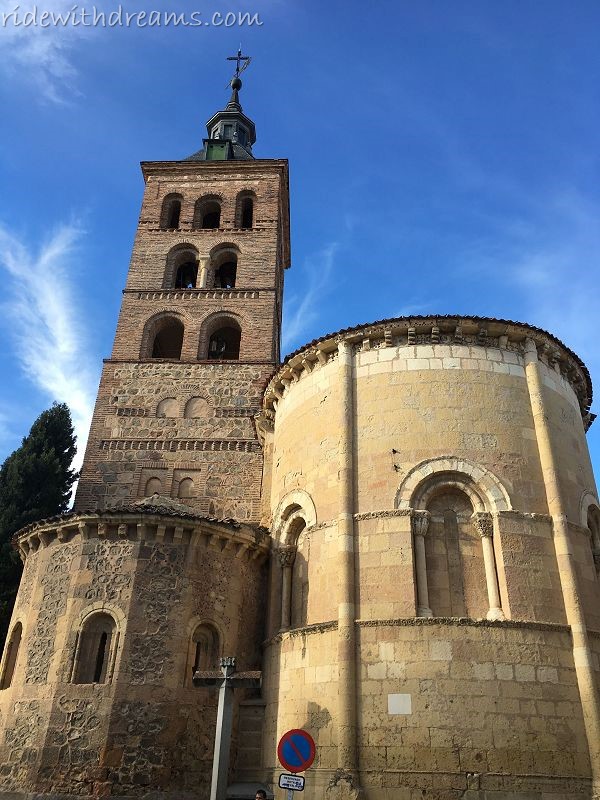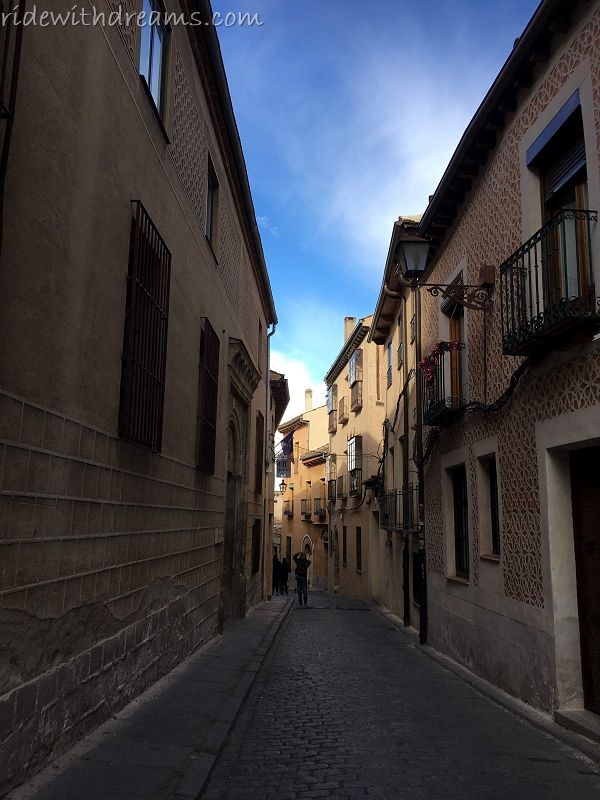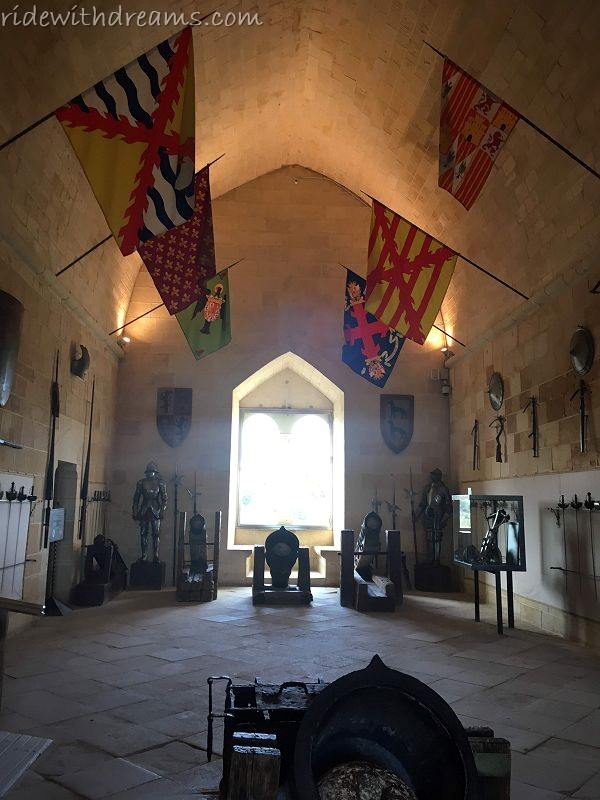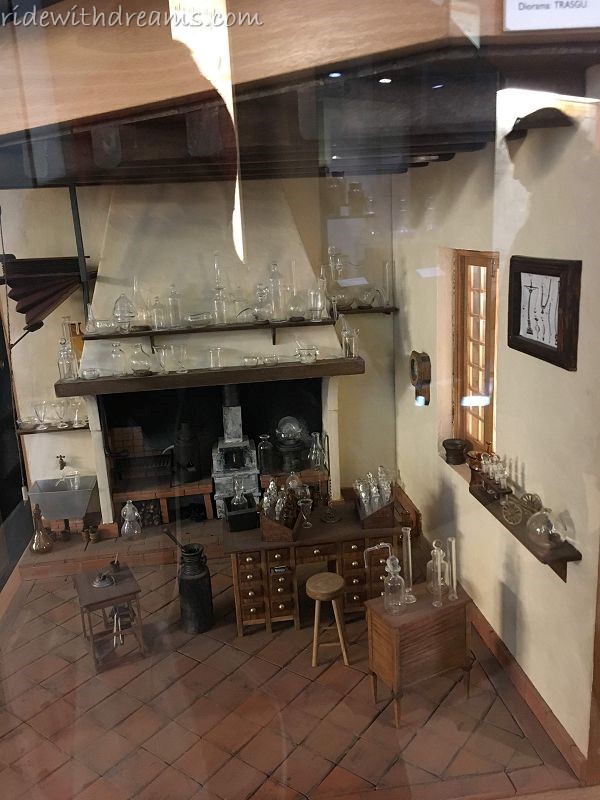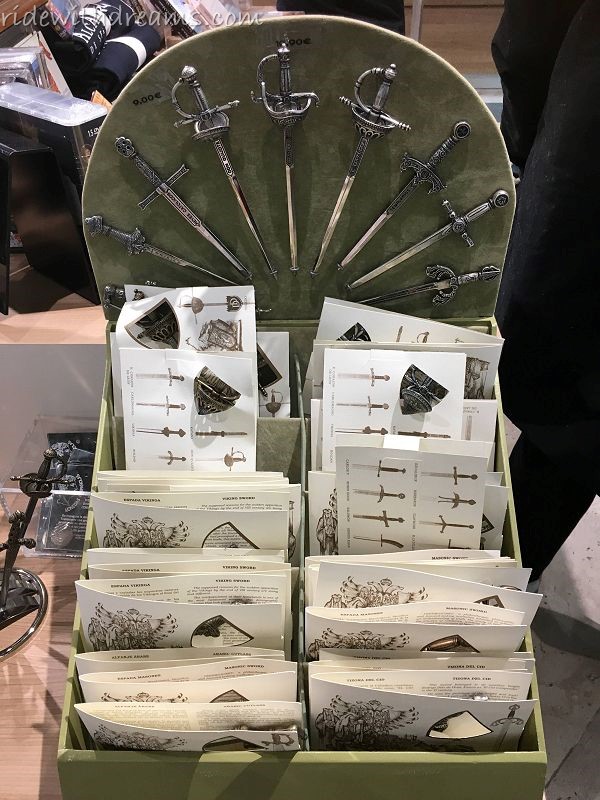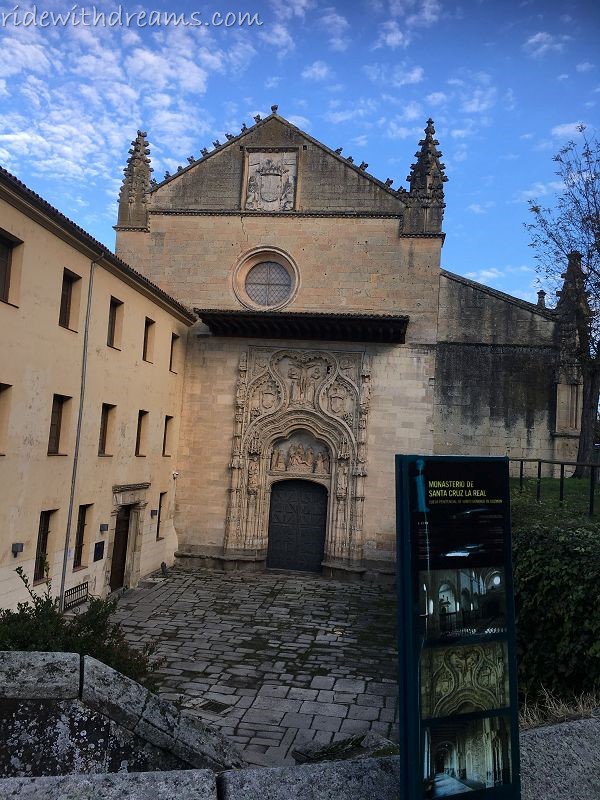From Madrid (Madrid-Chamartín-Clara Campoamor) to Segovia (Guiomar) by train (renfe) only takes about half an hour, so we took a day trip to the popular sight-seeing spot before we left Madrid.
===== From Wikipedia =====
Segovia is a city in the autonomous community of Castile and León, Spain. It is the capital and most populated municipality of the Province of Segovia.
Segovia is in the Inner Plateau, near the northern slopes of the Sistema Central range and straddles the Eresma river.
The city is famous for its historic buildings including three main landmarks: its midtown Roman aqueduct, its cathedral (one of the last ones to be built in Europe following a Gothic style), and the castle, which served as one of the templates for Walt Disney’s Cinderella Castle. The city center was declared of World Heritage by UNESCO in 1985.
We took the earliest train to Segovia, and had my breakfast inside the train. Even we arrived, it was still early morning. It was so quiet that nothing opened. The whole town was still sleeping, so we followed the map and slowly walked into the town. It was actually quite pleasant to walk in such a beautiful town. All the buildings looked like in the Middle Ages. It’s as if we had walking into a Disney cartoon. We could almost the birds singing.
Soon, we could the famous symbol of Segovia, the Aqueduct from far away. It is so big and tall, hard to miss. In fact, when we arrived the foot of the Aqueduct, the sun was about to rise, so it was quite a view. We slowly climbed up the stairs towards the top of the Aqueduct, where it was high enough to oversee the complete town. We could see different view at each side. It was interesting. We spent a lot of time up there, enjoying the amazing views.
===== From Wikipedia =====
The Aqueduct of Segovia is a Roman aqueduct in Segovia, Spain. It is one of the best-preserved elevated Roman aqueducts and the foremost symbol of Segovia, as evidenced by its presence on the city’s coat of arms.
As the aqueduct lacks a legible inscription, the date of construction cannot be definitively determined. It was thought to have been during the 1st century AD, during the reigns of the Emperors Domitian, Nerva, and Trajan.
The aqueduct once transported water from the Rio Frio river, situated in mountains 17 km (11 mi) from the city in the La Acebeda region. It runs 15 km (9.3 mi) before arriving in the city.
After we had taken enough pictures, we moved on to other parts of the town. We passed by a lovely garden, and an open market. It wasn’t so big, but there are fresh vegetable, fruits and daily products sold there. It was so lively, different from the supermarkets that we always go.
Behind the open market is a very big old Cathedral. Inside was beautifully structured and well-maintained.
===== From Wikipedia =====
Segovia Cathedral is the Gothic-style Roman Catholic cathedral located in the main square (Plaza Mayor) of the city of Segovia, in the community of Castile-Leon, Spain. The church, dedicated to the Virgin Mary, was built in a Gothic style in the mid-16th century. The massive cathedral was built between 1525-1577 in a late Gothic style, outdated elsewhere in Europe.
We went on to visit most exciting feature of Segovia — the Alcázar of Segovia!! It was really so beautiful inside and out. Their walls had very unique patterns. Also, I love their colored windows! There were different pictures on each window. They were all extremely detailed. All in all, I couldn’t believe that the castle was preserved so well and so beautiful, no wonder it is rumoured to be the inspiration behind Cinderella’s Castle in Walt Disney World!!
===== From Wikipedia =====
The Alcázar of Segovia is a medieval castle located in the city of Segovia, Castile and León, Spain. The fortress is a World Heritage Site by UNESCO. Rising out on a rocky crag above the confluence of two rivers near the Guadarrama mountains, it is one of the most distinctive castle-palaces in Spain by virtue of its shape – like the bow of a ship. The alcázar was originally built to serve as a fortress but has served as a royal palace, a state prison, a Royal Artillery College, and a military academy since then. It is currently used as a museum and a military archives building.
The Alcázar of Segovia, like many fortifications in Spain, started off as a Roman castrum, but apart from the foundations, little of the original structure remains. A Muslim era fort, which was itself largely replaced by the present structure, was built by the Berber Almoravid dynasty. The first reference to this castle was in 1120, around 32 years after the city of Segovia was conquered by the Christians (during the time when King Alfonso VI reconquered lands to the south of the Duero river down to Toledo and beyond).
The view from the Castle was magnificant! One side you can see the wide fields, with winding little roads and farm houses, looked just like in the Middle Ages. At the other side, you can see the beautiful town, with the Cathedral at the center. Around the castle, you can see the shockingly deep broad ditch (moat), which is now empty. Perhaps once upon one time, it was filled with water.
We slowly walked down the hill, back into the town. There we have famous “Roast Suckling Pig” as lunch!! If you don’t know what it is, please see the site below. In fact, we ate at this very restaurant, saw the owner put the pig with a dish, and then break it on the floor. It was an interesting show!
The pork was indeed very tender, but the portion was too big for us. We couldn’t finish it. Also, I love the Hearty Bean Soup. It seems to be traditional and popular too!
https://www.insider.com/tender-segovia-suckling-pig-is-cut-with-dull-plates-2018-5
We had some free time in the afternoon, so we simply walked around in the town, and we happened to found a lovely trail along the riverside. I thought, it would be so nice to live in quiet place like this.
In the evening, we walked in the crowded business district. No wonder it was full of gift shops and tourists, but the Christmas decorations were adorable, and at night Segovia was beautiful as well. I was sleepy on the way back. Luckily, the train ride only took half an hour.
It was a beautiful town, and so close to Madrid, totally worth the visit. I was especially glad to see the amazing beautiful castle!
Good night zzz
